
Swedish cuisine is the traditional food of Sweden. Due to Sweden's large north-to-south expanse, there are regional differences between the cuisine of North and South Sweden.
In the philologist and fantasy author J. R. R. Tolkien's Middle-earth fiction, a warg is a particularly large and evil kind of wolf that could be ridden by orcs. He derived the name and characteristics of his wargs by combining meanings and myths from Old Norse and Old English. In Norse mythology, a vargr is a wolf, especially the wolf Fenrir that destroyed the god Odin in the battle of Ragnarök, and the wolves Sköll and Hati, Fenrir's children, who perpetually chase the Sun and Moon. In Old English, a wearh is an outcast who may be strangled to death.

Medelpad is a historical province or landskap in the north of Sweden. It borders Hälsingland, Härjedalen, Jämtland, Ångermanland and the Gulf of Bothnia.

A cabbage roll is a dish consisting of cooked cabbage leaves wrapped around a variety of fillings. It is common to the cuisines of Central, Northern, Eastern and Southeastern Europe and much of Western Asia, Northern China, as well as parts of North Africa. Meat fillings are traditional in Europe, and include beef, lamb, or pork seasoned with garlic, onion, and spices. Grains such as rice and barley, mushrooms, and vegetables are often included as well. Fermented cabbage leaves are used for wrapping, particularly in southeastern Europe. In Asia, seafoods, tofu, and shiitake mushrooms may also be used. Chinese cabbage is often used as a wrapping.

Per Gottfrid Svartholm Warg, alias anakata, is a Swedish computer specialist, known as the former co-owner of the web hosting company PRQ and co-founder of the BitTorrent site The Pirate Bay together with Fredrik Neij and Peter Sunde.
A collop is a slice of meat, according to one definition in the Oxford English Dictionary. In Elizabethan times, "collops" came to refer specifically to slices of bacon. Shrove Monday, also known as Collop Monday, was traditionally the last day to cook and eat meat before Ash Wednesday, which was a non-meat day in the pre-Lenten season also known as Shrovetide. A traditional breakfast dish was collops of bacon topped with a fried egg.
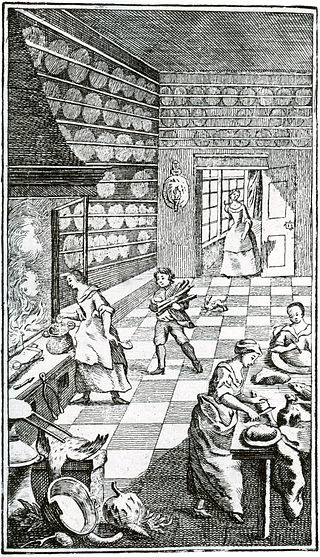
Anna Christina Warg, better known as CajsaWarg, was a Swedish cookbook author and one of the best-known cooks in the Swedish culinary history. Born in Örebro in Sweden, she worked as a cook and housekeeper for notable individuals in Stockholm. She is particularly renowned for her famous cookbook titled Hjelpreda i Hushållningen för Unga Fruentimber, published in 1755. An essential reference for homemakers in 18th-century Sweden, this book had several editions and was also translated in German, Danish and Estonian.

Anna Maria Rückerschöld, born Rücker, was a Swedish writer who wrote several popular books on housekeeping and cooking in the late 18th and early 19th century. She was an advocate of women's right to a good education in household matters and propagated this view in public debate through an anonymous letter in 1770. Along with Cajsa Warg and other female cookbook authors, she was an influential figure in culinary matters in early modern Sweden.
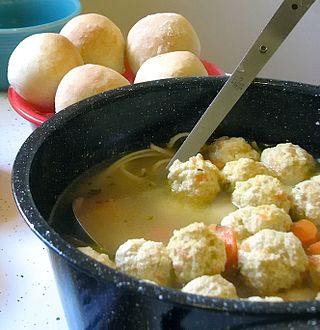
A meatball is ground meat (mince) rolled into a ball, sometimes along with other ingredients, such as bread crumbs, minced onion, eggs, butter, and seasoning. Meatballs are cooked by frying, baking, steaming, or braising in sauce. There are many types of meatballs using different types of meats and spices. The term is sometimes extended to meatless versions based on legumes, vegetables, mushrooms, fish or other seafood.

Hanna Olava Winsnes was a Norwegian poet, novelist and cookbook writer.
Kajsa is a Swedish feminine given name. Initially, Kajsa, Kaisa or Cajsa was a variation of the name Karin, in turn a variation of the name Katarina (Catherine). It is known in Sweden since 1540. It is also used in Finland and Norway.
A warg is a fictional demonic species of wolves created by J.R.R. Tolkien.

Cajsa Stina (CajsaStina) Åkerström, is a Swedish singer-songwriter, painter and author. She is the daughter of singer Fred Åkerström.

Cajsa Stina Åkerström is a 1994 studio album by CajsaStina Åkerström. and her debut album.
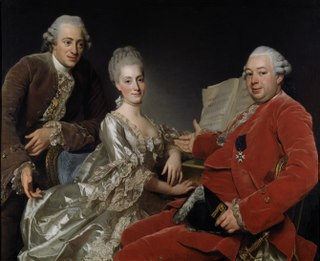
Events from the year 1769 in Sweden

Events from the year 1755 in Sweden

Events from the year 1703 in Sweden
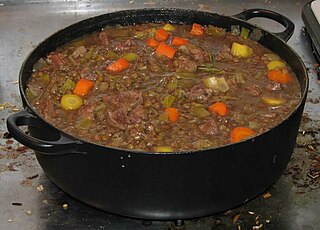
A stew is a combination of solid food ingredients that have been cooked in liquid and served in the resultant gravy. Ingredients can include any combination of vegetables and may include meat, especially tougher meats suitable for slow-cooking, such as beef, pork, venison, rabbit, lamb, poultry, sausages, and seafood. While water can be used as the stew-cooking liquid, stock is also common. A small amount of red wine or other alcohol is sometimes added for flavour. Seasonings and flavourings may also be added. Stews are typically cooked at a relatively low temperature, allowing flavours to mingle.
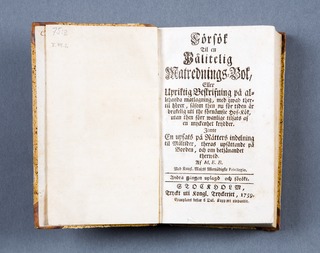
Margareta (Maria) Elzberg was a Swedish domestic servant or housekeeper who published the early Swedish cookbook: An Attempt at a Reliable Book on Food Preparation in 1751. The full title page reads (translated): "An Attempt at a Reliable Book on Food Preparation, or Detailed description how to prepared foods of all kinds with everything needed for the purpose such as what is required for the finest kitchens, including many herbs and spices. With a section on serving dishes, on how to display food on the table, and on the role of servants. By M.E.B. Stockholm, printed at the royal printing works, 1751."
Cajsa S. Lund is a Swedish music archaeologist and prehistorian, who pioneered the study of sound and music in the archaeological record.














